Travelist.rs » Beograd » LUI TRAVEL

LUI TRAVEL DOO BEOGRAD (ČUKARICA)
Lui Travel turistička agencija – putovanja u evrpske gradove, organizovanje izleta, ekskurzija, letnji aranžmani za Grčku i Tursku, lasti minute ponude.
http://luitravel.rs/
YUTA - Nacionalna asocijacija turističkih agencija

- turistička agencija
- FIRST MINUTE
- LAST MINUTE
Učitavanje...

Pretraga putovanja po?
Pretražite yuta članice, first minute ponude agencija, last minute ponude agencija.

- Delatnosti agencije
- Direktor: G-din Miodrag Stojiljković
- Licenca: OTP 23/2022
- Adresa: Stevana Filipovića 115a - sedište, Brankova 23
- Postanski broj: 11000 / Mesto: Beograd
- Telefon: 011/2620-530, 2621-131, 2623-152
- Fax: 011/2620-530
- Email: [email protected]
- Web sajt: www.luitravel.rs
- PIB: 101031973
- Dečiji i omladinski turizam ekskurzije
Preduzeće LUI TRAVEL d.o.o je osnovano 1993. godine. Sedište firme je u Beogradu u ul. Stevana Filipovića br. 115a. Kao osnovnu delatnost ima prevoz putnika u drumskom saobraćaju. Vlasnik i osnivač preduzeća je gospodin Miodrag Stojiljković. U okviru preduzeća, od 08.03.2002., posluje i turistička agencija LUI TRAVEL koja poseduje licencu OTP 38/2016 Ministarstva trgovine, turizma i usluga za organizovanje putovanja u zemlji i inostranstvu. Turistička agencija je godinama unazad članica YUTA-e i uspešno se bavi organizacijom letnjih i zimskih turističkih aranžmana; đačkih ekskurzija, kako u zemlji tako i u inostranstvu; jednodnevnih i višednevnih izleta, vikend putovanja; kongresa u zemlji i inostranstvu. Preduzeće LUI TRAVEL d.o.o je raspolaže sa 19 autobusa visoke turističke klase koje koristi za sopstvene potrebe, a na osnovu zahteva pravnih i fizičkih lica vrši i iznajmljivanje istih. Istovremeno, naših 30 gradskih autobusa svakodnevno saobraća na redovnim dnevnim i noćnim linijama gradskog prevoza grada Beograda. Osnovni cilj našeg poslovanja je Vaše zadovoljstvo. Osposobljeni smo da odgovorimo na svaki zahtev bilo da je u pitanju pojedinačno ili grupno putovanje. Najpovoljnije cene omogućile su nam i stavljanje lojalne klijentele koja se iz godine u godinu uvećava. Najbolja potvrda svega navedenog ste upravo Vi, dugogodišnji korisnici naših usluga. Naša želja je da se i Vi, koji do sada niste imali priliku da putujete sa nama, uverite u kvalitet naše usluge: - prevoz turističkim autobusima koji su u našem vlasništvu; - odgovorni pratioci grupa i predstavnici u turističkim mestima; - smeštaj, biran u skladu sa zahtevima naših klijenata; - povoljni uslovi plaćanja. Našu prodajnu mrežu danas čini šest poslovnica od kojih se tri nalaze u Beogradu, jedna u Novom Sadu, jedna u Kruševcu i jedna u Nišu. Pored navedenih, naše aranžmane prodaje i veliki broj subagenata kako u Srbiji tako i u zemljama u regionu. Putujte sa Lui Travel-om i budite uvek: Za kilometar ispred svih...
LUI TRAVEL poslovnice
T.a. lui travel, najnovije ponude putovanja agencije lui travel, putovanja 2024 lui travel.

FRUŠKOGORSKA VINSKA ŠETNJA – FRUŠKA WALK AND WINE 2024

PRIPREMA ZA PRAKTIČNI DEO ISPITA ZA TURISTIČKE VODIČE

YUTA SAOPŠTENJE
Yuta - anketa, da li na letovanje putujete sa agencijom ili u sopstvenom aranžmanu:, letovaćete u, članice po slučajnom izboru.

BT PEGROTOUR

OLYMPIC TRAVEL

BUDGET RENT A CAR - PANALEX

AXIOMA TRAVEL
Ponude po slučajnom izboru.

GRČKA - KEFALONIA LETO 2024 - VILLA KATERINA

St. Peterburg i Moskva Oktobar
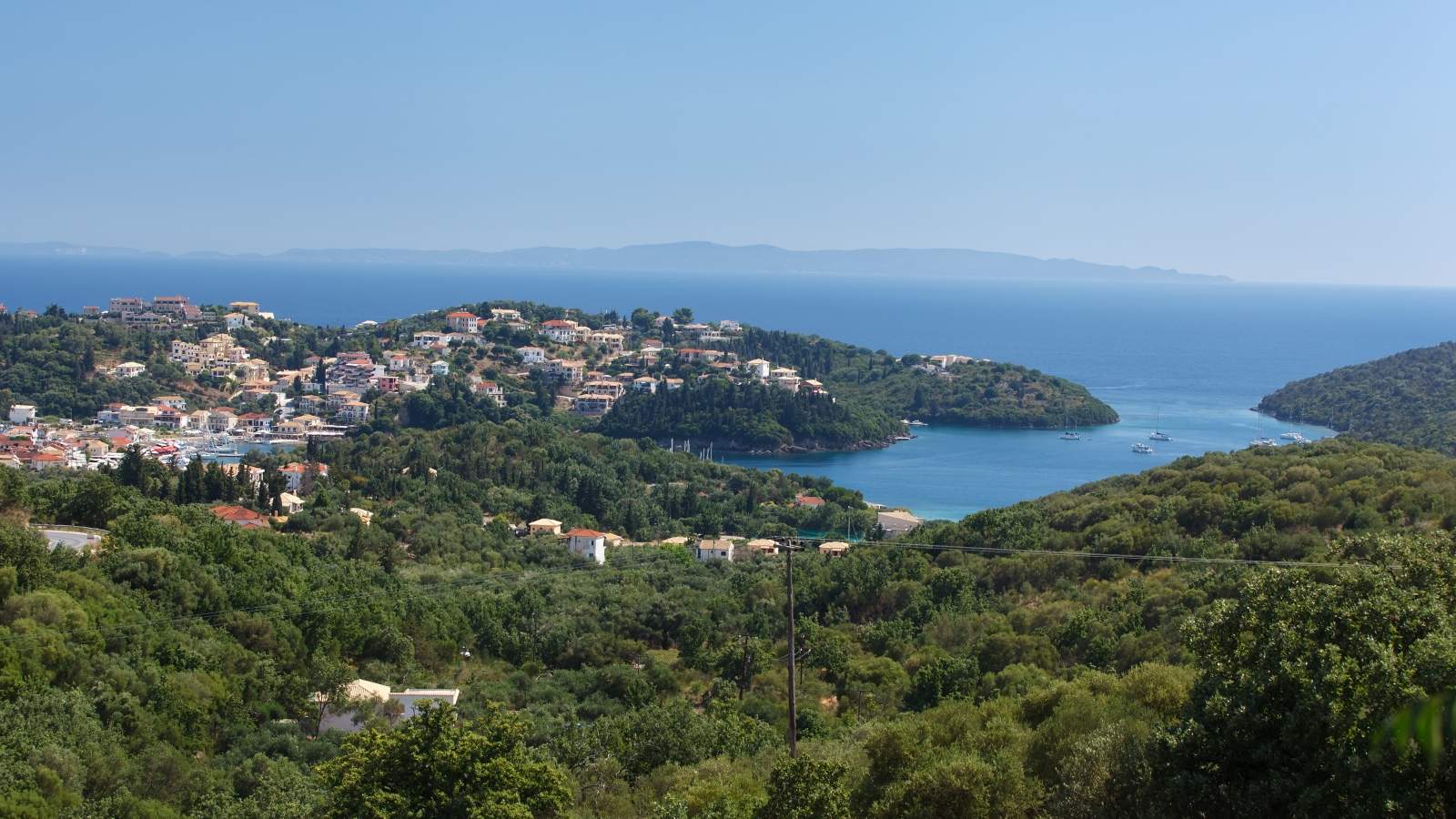
Vila Irida, Sivota

APARTHOTEL HELLAS - PARALIJA 2024

KOSTA DORADA LETOVANJE 2024

Subscribe to our Newsletter
Cookies are small text files that can be used by websites to make a user's experience more efficient. The law states that we can store cookies on your device if they are strictly necessary for the operation of this site. For all other types of cookies we need your permission. This site uses different types of cookies. Some cookies are placed by third party services that appear on our pages. We share information about your use of our site with our social media, advertising and analytics partners who may combine it with other information that you’ve provided to them or that they’ve collected from your use of their services. Your consent applies to the following domains: polazak.com
Necessary cookies help make a website usable by enabling basic functions like page navigation and access to secure areas of the website. The website cannot function properly without these cookies.
Preference cookies enable a website to remember information that changes the way the website behaves or looks, like your preferred language or the region that you are in.
Statistic cookies help website owners to understand how visitors interact with websites by collecting and reporting information anonymously.
Marketing cookies are used to track visitors across websites. The intention is to display ads that are relevant and engaging for the individual user and thereby more valuable for publishers and third party advertisers.

leptokarija

olympic beach

Destinacija: Sve Halkidiki Hanioti Leptokaria Nea Vrasna Nei Pori Olympic beach Paralia Pefkohori Stavros Tasos
Location: Sve Grčka

Apartmani Maria
Objekat poseduje bazen u drugom delu dvorišta koji mogu koristiti odrasli i decu sa ležaljkama i suncobranima.
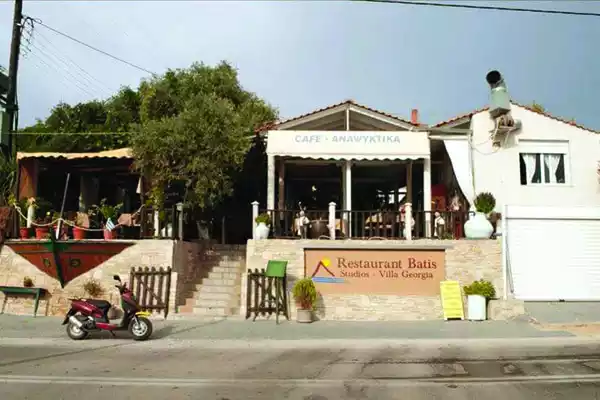
Vila Georgia
Vila Georgia smesteštena je na svega 30m od plaže Psili Ammos. Ova plaža po mnogima je jedna od najlepših na Tasosu.

Vila Nikos se nalazi u centralnom delu Potosa na oko 150 metara od mora. Sve smeštajne jedinice se nalaze na prvom spratu vile.
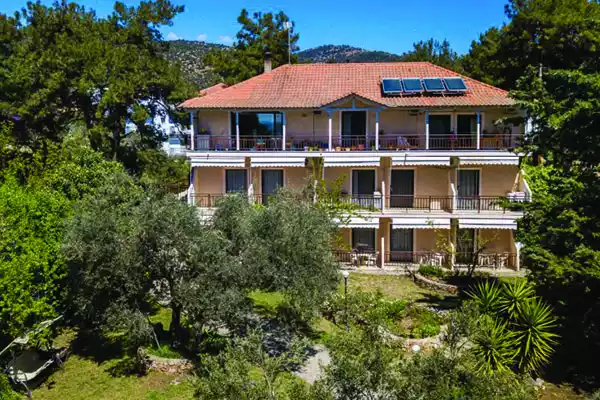
Vila Thassos
Vila Thassos nalazi se u mestu Pefkari na samo 100m od plaže. Vila ima veliko dvorište, roštilj, garnituri za sedenje, parking.
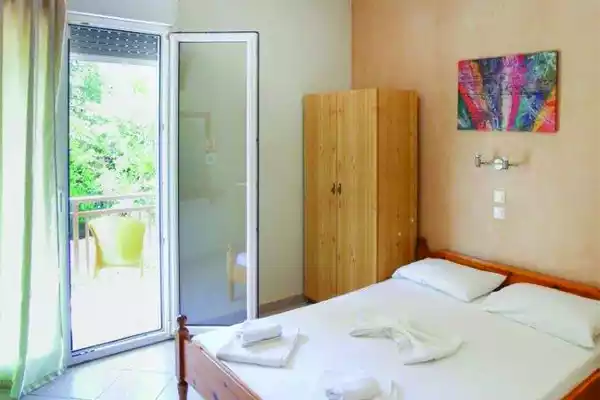
Vila Haus Sofi nalazi se u mestu Pefkari , na oko 600m od centra Potosa. Od plaže je udaljena oko 120m i ima sopstveni parking.
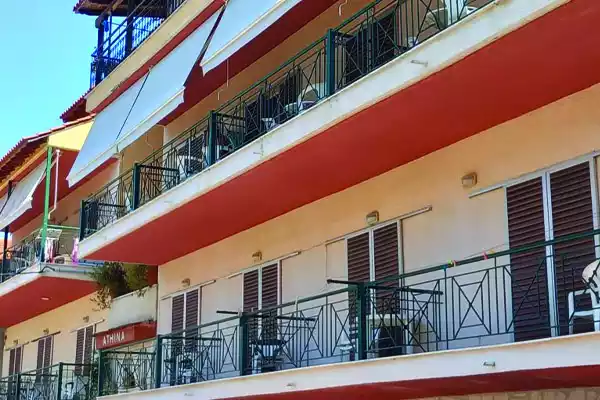
Vila Athina
Vila Athina se nalazi u Pefkohoriju, na 300 metara udaljenosti od plaže i 150 metara od centra.
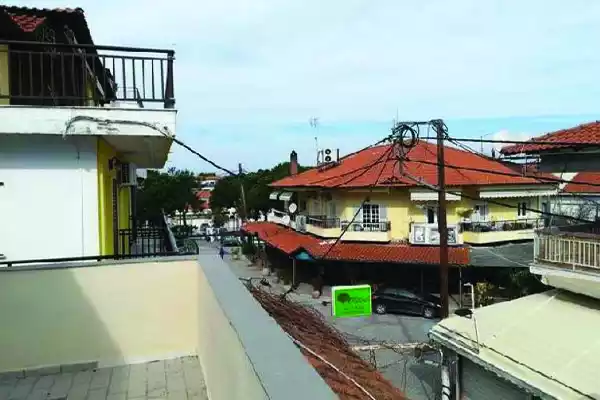
Vila Tsiboukas
Vila Tsiboukas (Cibukas) se nalazi na 20 metara od samog centra, i na 150 metara od plaže.
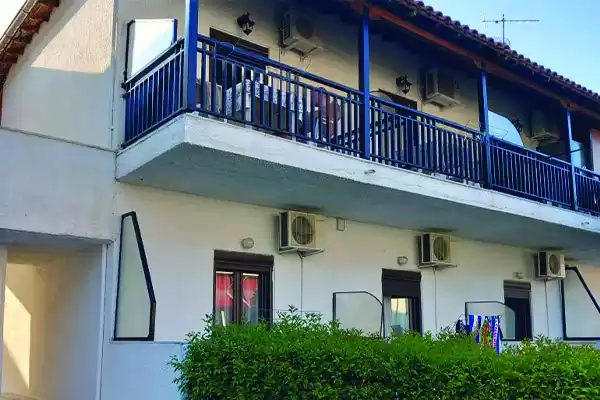
Vila Palma se nalazi u centru Pefkohorija, iznad magistralnog puta, na 150 m od plaže.
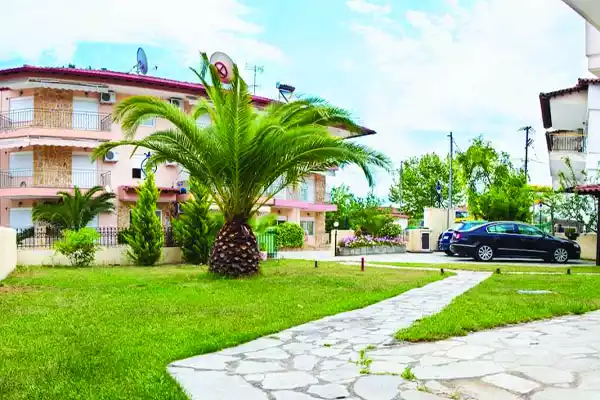
Vila Triandafilios
Vila Triandafilos se nalazi u mirnom delu Haniotija na 350 m od plaže.
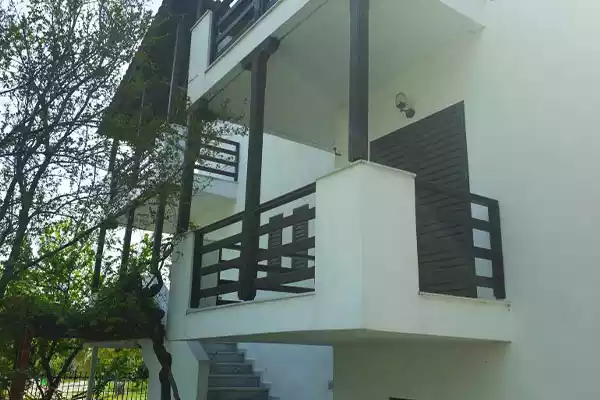
Vila Sophia
Vila Sofia se nalazi u širem centru Haniotija, oko 70m udaljena od plaže.

Vila Artos se nalazi u centru Pefkohorija, udaljena oko 150 m od plaže.
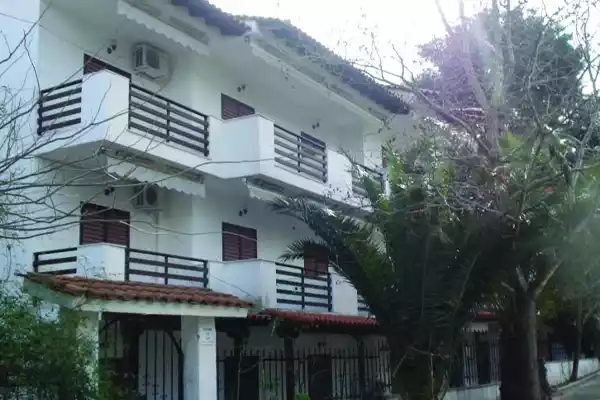
Vila Anthi se nalazi u širem centru Haniotija, oko 70m udaljena od plaže.

Vila Lena 2
Vila Lena 2 se nalazi u mirnom delu udaljena od plaže oko 250 m.
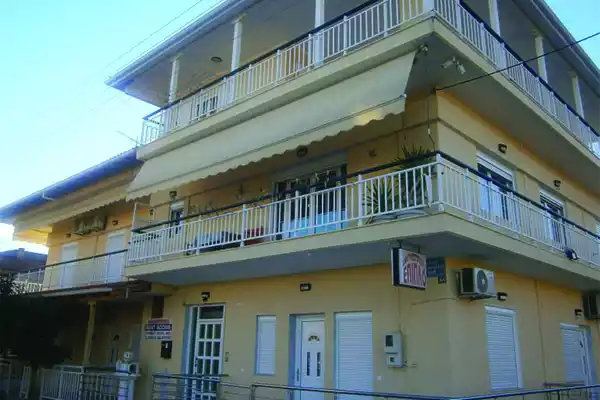
Vila Lena 1
Vila Lena 1 se nalazi u mirnom delu udaljena od plaže oko 250 m.
Vila Andonis
Vila Andonis se nalazi u mirnom delu u trećem redu od plaže udaljene oko 100 m.
Vila Regina
Vila Regina se nalazi oko 40m od same plaže u Nea Vrasni. Od šetališta je udaljena oko 30m.
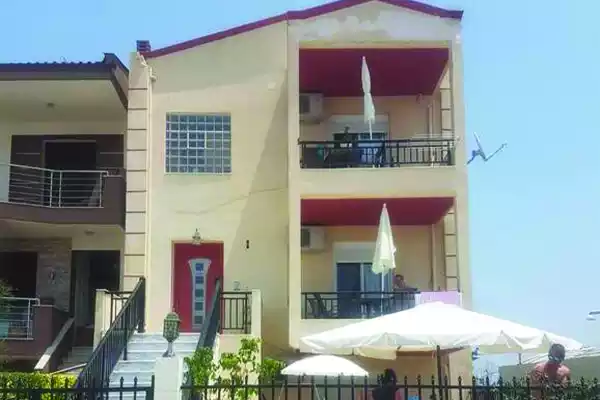
Vila Petros
Vila Petros se nalazi u mirnijem, novijem delu Stavrosa. Od plaže je udaljena svega 20m.
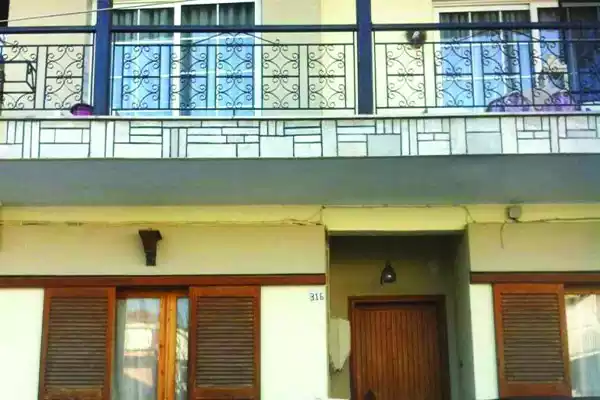

Vila Zafiris
Vila Zafiris se nalazi u mirnom delu Stavrosa. Od plaže je udaljena oko 250 m.
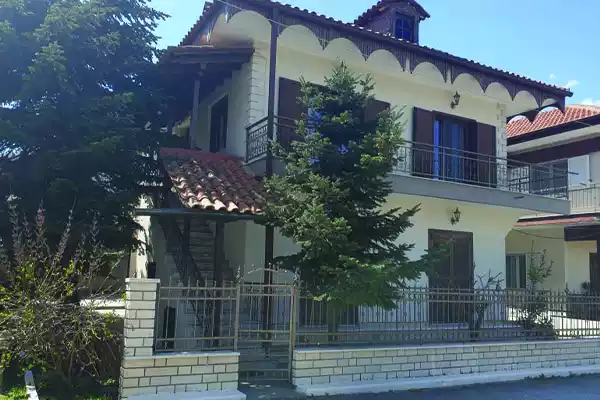
Vila Evangelia
Vila Evangelia se nalazi u mirnom delu Stavrosa. Od plaže je udaljena oko 350m.
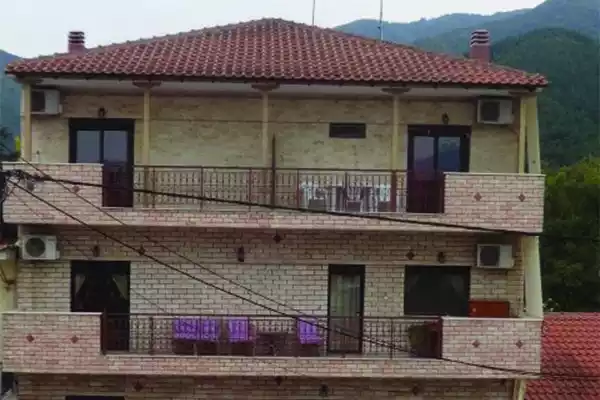
Vila Fotini
Vila Fotini se nalazi u samom centru Stavrosa, u glavnoj ulici, okružena brojnim prodavnicama i restoranima. Od plaže je udaljena oko 100m.
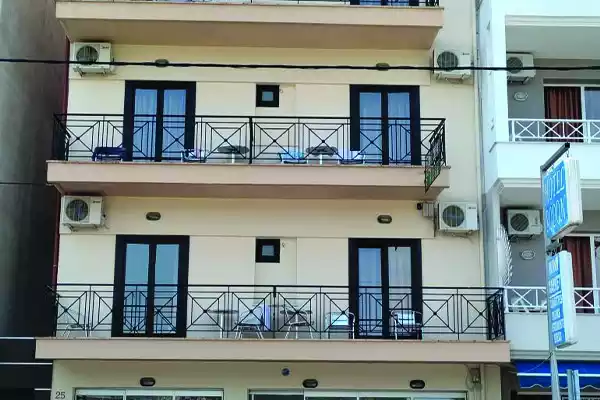
Vila Kromlidis
Vila Kromlidis se nalazi u novom delu Paralije, oko 150m udaljena od plaže i oko 220m od centra.
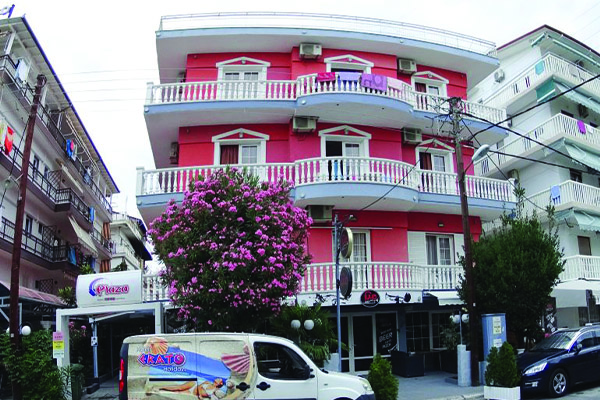
Hotel studios PLAZA
Vila Plaza se nalazi u blizini hotela ”Erato”. Od plaže je udaljena oko 130 m, a od centra oko 150 m.
Olympic beach
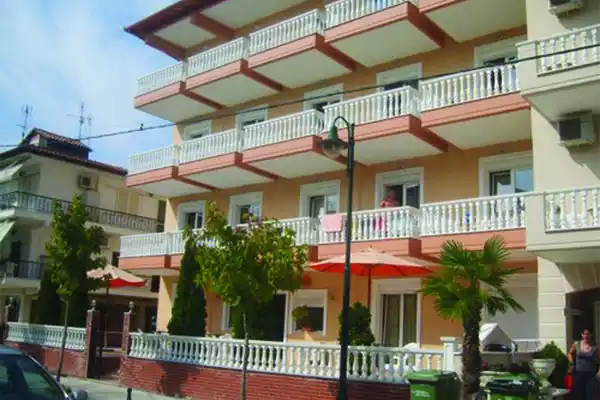
Vila Olga se nalazi na oko 180 m od plaže. Korišćenje Wi – Fi interneta je besplatno.
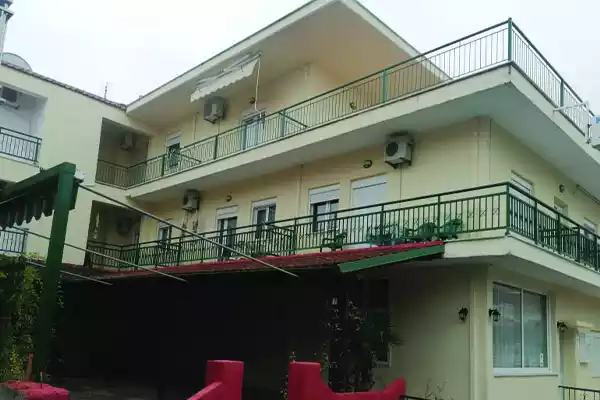
Vila Luiza je locirana u mirnom delu Leptokarije blizu gradske plaže (minut hoda).
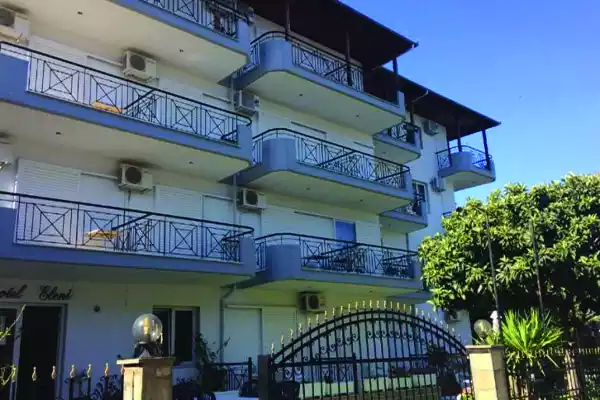
Vila Thomas
Vila Tomas se nalazi u starom delu Nei Porija, na par minuta hoda od plaže.

- Radio Pingvin Uživo
- Domaće Pesme
- Strane pesme
- Poslovni adresar
Turistička agencija Lui Travel
Turističke agencije
Grčka, Turska, Egipat, Tunis… Last minute ponude. Mogućnost iznajmljivanja autobusa. Budite i Vi za kilometar ispred svih!
Najpovoljnije cene!
Turističke agencije Beograd
Komentariši.
Ime (obavezno)
E-Mail (neće biti objavljen) (obavezno)

Polazak objedinjuje kompletno tržište javnog prevoza u drumskom i železničkom saobraćaju pružajući uvid u kontakt detalje svakog prevoznika. Postoji i poseban sistem „ocenjivanje prevoznika“ od strane korisnika čime se budućim putnicima pruža verododostojna informacija o kvalitetu usluga prevoznika. Naši korisnici imaju mogućnost komentarisanja prevoznika. Računamo na vas u zajedničkom ocenjivanju prevoznika!
Prijava za Newsletter
Kolačići su male tekstualne datoteke, koje mogu koristiti veb sajtovi, da učine korisničko iskustvo efikasnijim. Zakon navodi da možemo čuvati kolačiće na Vašem uređaju, ako su strogo neophodni za rad ovog sajta. Za sve ostale tipove kolačića nam je potrebna Vaša saglasnost. Takođe delimo informacije o tome, kako koristite sajt, sa partnerima za društvene medije, oglašavanje i analitiku, koji mogu da ih kombinuju sa drugim informacijama, koje ste im dali ili koje su prikupili na osnovu korišćenja usluga. Ovaj sajt koristi različite tipove kolačića. Neke kolačiće, koji se pojavljuju na našim stranama, postavljaju usluge trećih strana. Vaša saglasnost važi za sledeće domene: polazak.com
Neophodni kolačići pomažu da sajt bude upotrebljiv omogućavajući osnovne funkcije kao što su navigacija na stranici i pristup bezbednim oblastima web sajta. Web sajt ne može da funkcioniše pravilno bez ovih kolačića.
Kolačići podešavanja omogućuju web sajtu da zapamti informaciju koja menja način na koji se web sajt ponaša ili izgleda, kao što su vaš podešeni jezik ili oblast u kojoj se nalazite.
Statistički kolačići pomažu vlasnicima web sajta da razumeju interakciju posetilaca sa web sajtom anonimnim sakupljanjem informacija i izveštavanjem.
Marketing kolačići se koriste za praćenje posetioca na web sajtovima. Namera je da se prikažu reklame koje su relevantne i privlačne za pojedinačnog korisnika a time i od veće vrednosti za izdavače i treće strane oglašivače.
We serve our travel industry partners in the most efficient way by providing superb quality service, competitive rates and a constantly expanding range of services.

Nema rezultata pretrage
- EGIPAT & TUNIS
GRČKA APARTMANI
Grčka hoteli.
- GRČKA AVIONOM

- GRADOVI AUTOBUSOM
- GRADOVI AVIONOM
- LUX APARTMANI
- LETO 2024 aktuelni programi
- EVROPSKI GRADOVI sigurni polasci iz Niša
- GRČKA HOTELI 2024
- TURSKA AVIO 2024
- TURSKA BUS 2024
EVROPSKI GRADOVI

Izdvajamo iz ponude 2024 #letovanje2024
- TURSKA / ANTALIJA
- TURSKA / EGEJ
Informacije #info2023
Oktopod travel.
Zahvaljujući velikom trudu i konstantnom zalaganju već 25 godina unazad uspeli smo da se izborimo za poziciju iskusnog i pouzdanog organizatora putovanja u zemlji i inostranstvu sa licencom OTP 105/2021 kategorije A. Naš tim se gradi od 1998. godine i svake sezone je sve veći i bogatiji kvalifikovanim radnicima sa višegodišnjim iskustvom u turizmu. Danas je "Oktopod" moderna agencija sa sedam poslovnica, pet u Beogradu i po jednom poslovnicom u Nišu i Novom Sadu.
Oktopod travel ima istaknutu lidersku poziciju na tržištu u ponudi aranžmana za letovanje 2024 u grčkim apartmanima na više od 20 destinacija. Nastojimo da naša ponuda bude uvek interesantna i raznovrsna, a ujedno, uz naše aktuelne last minute ponude, velike first minute popuste i akcije, povoljna i svima pristupačna. Naša ponuda vam pruža i uživanje u istinskom hedonizmu turskih, egipatskih, tunižanskih hotela, upoznavanje mediteranskog stila života Italije i Španije...Vodimo vas i do najlepših trgova i kulturnih znamenitosti velikih metropola Evrope, za ljubitelje skijanja izdvajamo kilometre utabanih staza u najpopularnijim ski centrima regiona, a ako želite da prekratite zimu zaputite se ka nekoj od egzotičnih dalekih destinacija sa večitim letom...I sve to sa Oktopod travelom! Nastojimo da naša ponuda bude prilagođena svim generacijama, kako mladim parovima, porodicama sa decom, tako i starijoj populaciji.
Pored široke ponude apartmanskog i hotelskog smeštaja u Grčkoj, kao i ostalim popularnim destinacijama Evrope ponosni smo vlasnici 11 moderno opremljenih turističkih autobusa sa kojima bezbedno stižete do najlepših letovališta i gradova.
Naš rad je takođe istaknut u oblasti ekskurzija i đačkog turizma, organizovanja popularnih Radničko sportskih igara u Grčkoj, sada već tradicionalno od 2010. godine, zatim uspešnog Simpozijuma Alims od 2015. godine, kao i raznih individualnih putovanja do najlepših destinacija sveta. Dokaz našeg uspeha je i sve veći broj putnika koji nam iz godine u godinu ukazuju poverenje, sve veća subagentska prodajna mreža širom Srbije, konkurentne cene kao i brojne nagrade i priznanja - Šampion turizma za kategoriju "Grčka" (2005-2008 i 2014. god.) / Šampion turizma za kategoriju "Evropski gradovi" (2015. god.) / Beogradski pobednik za kategoriju "najposećeniji sajt i najbolja turistička organizacija" (2018.). Prvenstveno nastojimo da putovanja budu vaš istinski užitak i da sa lakoćom priuštite odmor za pamćenje. Plaćanja administrativnom zabranom i čekovima bez kamate su posebne pogodnosti koje omogućavaju da se troškovi putovanja rasporede na duži vremenski period.
Navedeno iskustvo, ugled, naš tim i desetine hiljada zadovoljnih putnika nam zasigurno daju podstrek da se dalje usavršavamo, budemo još bolji i tako doprinesemo Vašem zadovoljstvu i uživanju u putovanjima.
Vaš Oktopod
Oktopod Travel / Beograd ul. Velimira Bate Živojinovića 7, Beograd Tel: +381 11 41 55 555 E-mail: [email protected]
Oktopod Travel / Novi Beograd Gandijeva 148a, Beograd, Srbija (Piramida kockica) Tel: +381 11 41 55 555 E-mail: [email protected]
Oktopod Travel / Tc Stadion Zaplanjska 32, Beograd, Srbija (Tc Stadion) Tel: +381 11 41 55 555 E-mail: [email protected]
Oktopod Travel / YUBC Novi Beograd Bulevar Mihajla Pupina 10a, lokal 24,Novi Beograd, Srbija Tel: +381 11 41 55 555 E-mail: [email protected]
Oktopod Travel / Borča Bratstva i Jedinstva 28, Borča, Srbija Tel: +381 11 41 55 555 E-mail: [email protected]
Oktopod Travel / Novi Sad Petra Drapšina 47, Novi Sad, Srbija Tel: +381 21 31 05 220 E-mail: [email protected]
Oktopod Travel / Niš Dušanova 35, Niš, Srbija Tel: +381 18 310 52 20 E-mail: [email protected]
DRUŠTVENE MREŽE
Stavros / Leto 2024 Nea Vrasna - Vrasna Paralia / Leto 2024 Asprovalta / Leto 2024 Tasos / Leto 2024 Pefkohori / Leto 2024 Hanioti / Leto 2024 Polihrono / Leto 2024 Kalitea / Leto 2024 Sarti / Leto 2024 Nikiti / Leto 2024 Neos Marmaras / Leto 2024 Zaliv Simonitiko / Leto 2024 Metamorfosi / Leto 2024 Paralia / Leto 2024 Olympic Beach / Leto 2024 Leptokaria / Leto 2024 Platamon / Leto 2024 Nei Pori / Leto 2024 Kokino Nero / Leto 2024 AgioKampos / Leto 2024 Velika / Leto 2024 Plataria Sivota / Leto 2024 Sivota / Leto 2024 Parga / Leto 2024 Lefkada / Leto 2024 Evia / Leto 2024 Possidi / Leto 2024 Zapadna Kasandra / Leto 2024 Toroni / Leto 2024 Pirgadikia / Leto 2024 Lux Vile Grcka / Leto 2024 Nea Plagia / Leto 2024 Krf / Leto 2024 Nea Flogita / Leto 2024
Kasandra hoteli / Leto 2024 Sitonija hoteli / Leto 2024 Atos hoteli / Leto 2024 Olimpska regija / Leto 2024 Solunska regija hoteli / Leto 2024 Tasos / Kavala hoteli / Leto 2024 Strimonikos / Leto 2024 Atika / Leto 2024 Kamena Vurla / Leto 2024 Evia / Leto 2024 Krf / Leto 2024 Preveza / Leto 2024 Lefkada / Leto 2024 Pelion hoteli / Leto 2024 Parga / Leto 2024 Sivota / Leto 2024 Peloponez / Leto 2024 Alexandropoli / Leto 2024
TURSKA HOTELI
Kušadasi / Leto 2024 Sarimsakli / Leto 2024 Bodrum / Leto 2024 Didim / Leto 2024 Marmaris / Leto 2024 Antalija - Lara i Kundu / Leto 2024 Kemer / Leto 2024 Belek / Leto 2024 Side / Leto 2024 Alanja / Leto 2024
Putovanja autobusom 2024 Putovanja avionom 2024
BRZI LINKOVI
O nama Blog Opšti uslovi putovanja Online za subagente Važni dokumenti Administrativna zabrana 100% sigurna putovanja YUTA garancija Iznajmljivanje autobusa Zamenski vaučeri
Novi Beograd
Beograd, borča, ovlašćeni prodavci - franšize.
Okto Travel, Bulevar Kralja Aleksandra 540, Beograd, Srbija tel: +381 11 4009 018 mob: +381 63 833 88 26 email: [email protected]
IRIS 037 d.o.o. Kosovska 27, Kruševac (preko puta Medicus Universalis) mob: +381 69 350 20 28 email: [email protected]
JUNIOR TRAVEL d.o.o. Kneginje Milice 49, Jagodina, Srbija mob: +381 65 884 20 24 mob: +381 66 282 585 email: [email protected]

leptokarija

olympic beach
Iznajmljivanje autobusa.
Naša agencija nudi profesionalno i pouzdano iznajmljivanje autobusa. Bezbednost i udobnost naših putnika su nam prioritet. Sa našim modernim vozilima i iskusnim vozačima, garantujemo siguran i prijatan put. Prepustite organizaciju transporta nama i uživajte u svakom momentu putovanja

VOLVO ATOMIC 9
Volvo ATOMIC 9 stigao je u vozni park 2019.godine. kao pojačanje dotadašnjem voznom parku.Ovaj autobus poseduje 87 komercijalnih mesta a opremljen je savremenim AC, CD/DVD sistemom a takođe poseduje i WC kao i kuhinju.
U voznom parku agencije Lui Travel nalaze se dva ovakva autobusa.
Mesta za sedenje

Setra S417HDH
Ovaj autobus po mnogima je oličenje udobnosti i komfora.I sam proizvođač mu je dodelio naziv – Top Class, što svakako govori o tome kakvog kvaliteta, komfora, udobnosi i sigurnosti je ovaj autobus.Opremljen je savremenom audio/video opremom,klima uređajem kao i WC-om. Ovaj autobus raspolaže sa 59 komercijalnih mesta.
U voznom parku kompanije nalaze se 2 ovakva autobusa.

SETRA 431 DT
Kao i prethodni autobus i ova setra 431 DT je double decker autobus koji za razliku od prethodnog ima jedno mesto vise pa je u ovom slučaju na raspolaganju 81 komercijalna mesta. Osim što je ponos svojih kupaca ona je i ponos svoje klase a poznavaoci i ljubitelji ove marke , ovaj autobus žargonski zovu i “kraljica druma”.
Glavna odlika ovog autobusa je udobnost i raspored sedista na obe platforme što značajno doprinosi sveopštem utisku putnika kada je prevoz ovim autobusom u pitanju.Opremljen je savremenom audio i video opremom, klima sistemom kao i WC-om i kuhinjom.

Kao i prethodni autobus i ova setra 431 DT je double decker autobus koji za razliku od prethodnog ima jedno mesto vise pa je u ovom slučaju na raspolaganju 82 komercijalna mesta. Osim što je ponos svojih kupaca ona je i ponos svoje klase a poznavaoci i ljubitelji ove marke , ovaj autobus žargonski zovu i “kraljica druma”.

VOLVO IRMAOS MOTA ATOMIC IX
Ovaj autobus grandioznog izgleda i pojave nikoga ne ostavlja ravnodušnim. Svojim gabaritima i kapacitetom sedišta, u pojedinim situacijama može zameniti i 2 solo autobusa. Sa kapacitetom od 91 komercijalnog mesta, ovaj autobus omugućava prevoz većeg broja putnika. Bez obzira na broj sedišta ovaj autobus svojim putnicima pruža udobnost i komfor. Opremljen savremenom audio/video opremom,klima sistemom, WC-om i kuhinjom ovaj autobus ucinice vaše putovanje pravim uživanjem. Kompanija Lui Travel u svom voznom parku poseduje dva ovakva autobusa.

Za one koji preferiraju vozila marke Volvo,a grupa nije velika i nameju poterbe za iznajmljivanjem double decker autobusa,kompanija je u mogućnosti da ponudi Volvo B12. Solo autobus koji raspolaže sa 53 komercijalna mesta. Starije generacije, a ipak raspolaže kompletnom opremom koja je potrebna da vase putovanje protekne udobno i sigurno. Manji broj komercijalnih mesta značajno je uticao na povećanje komfora prilikom putovanja.Od opreme poseduje audio/video opremu,klima sistem kao i WC.

BOVA FUTURA F15
Ovaj autobus karakterističnog izgleda i danas ostavlja utisak kao da je vozilo iz budućnosti.Ovaj model konkretno, zadovoljiće potrebe onih klijenata čija grupa prelazi broj putnika za solo autobus a nije ni dovoljno velika da bi se angažovao double-decker.Bova futura f15 raspolaže sa 65 komercijalnih mesta i svom pratećom opremom koja je potrebna da bi se jedno putovanje uspešno realizovalo.

OTOKAR NAVIGO MEGA
Praktičan i pouzdan ovaj mini bus je idealno rešenje za one koji imaju zatvorenu grupu za kraća putovanja-razgledanje grada,jednodnevni izleti,prevoz po gradu.Odlično rešenje i za kompanije koje svojim zaposlenima žele da obezbede prevoz do i od posla.I ako mali,ovaj minibus uspešno je prelazio i dalja rastojanja do nekih popularnih Grčkih letovalilšta.Sa svojih 35 komercijalnih mesta odličan je izbor za manje grupe a opremljen je kao i njegovi veći konkurenti.Savremena audio/video oprema,klima sistem učiniće vase putovanje ugodnim i sigurnim.

MERCEDES BENZ SPRINTER 516
I ako najmanji član voznog parka agencije Lui Travel, ovaj Marcedes sa svojih 20 komercijalnih mesta može odgovoriti na zahteve manje grupe kojoj je komfor presudan.Vožnja ovim mini-busom, opremljenim savremenom opremom kao i mnogo veći od njega i kožnim sedištima, biće pravo uživanje.

IMAGES
VIDEO
COMMENTS
Istražite paket aranžmane za odmor sa nama, otkrivajući lepotu i kulturu kroz nezaboravna putovanja koja smo za Vas pripremili.
Lui Travel Poslovnica Novi Beograd. Jurija Gagarina br. 12a, lokal 7. Kontakt podaci: Telefon: 011/ 630-0417 011/ 630-0417 Telefon: 011/ 630-0418 011/ 630-0418 Mail: [email protected] Radno vreme: Lui Travel Poslovnica Novi Sad. Jevrejska br. 14b, Lokal 3. Kontakt podaci: ...
Lui Travel Turistička Agencija, Belgrade, Serbia. 54,071 likes · 47 were here. NAŠE POSLOVNICE: ZELENI VENAC - Brankova 23 Lui Travel Turistička Agencija | Belgrade
Za kilometar ispred svih. O nama. ©2024 - Lui Travel
Travelist.rs » Beograd » LUI TRAVEL. Aktivna. LUI TRAVEL DOO BEOGRAD (ČUKARICA) Lui Travel turistička agencija - putovanja u evrpske gradove, organizovanje izleta, ekskurzija, letnji aranžmani za Grčku i Tursku, lasti minute ponude. ... Kontakt; Uslovi korišćenja; Marketing;
Preduzeće LUI TRAVEL d.o.o je raspolaže sa 19 autobusa visoke turističke klase koje koristi za sopstvene potrebe, a na osnovu zahteva pravnih i fizičkih lica vrši i iznajmljivanje istih. Istovremeno, naših 30 gradskih autobusa svakodnevno saobraća na redovnim dnevnim i noćnim linijama gradskog prevoza grada Beograda.
Lui Travel. Buy ticket Opinions. 11000 Belgrade (Beograd) Stevana Filipovića 115A +381 11 2621 131. [email protected]. www.luitravel.rs. Opinions. Users feedback (5) (4.05) Vehicles. Staff. Punctuality. Cleanness of vehicles. Rate the operator... Vehicles. Staff. Punctuality. Cleanness of vehicles. Rate. I give my consent ...
Budite uvek za kilometar ispred svih uz turističku agenciju Lui Travel koja nudi povoljna putovanja i najatraktivnije turističke aranžmane!
Turistička agencija Lui Travel. Grčka, Turska, Egipat, Tunis… Last minute ponude. Mogućnost iznajmljivanja autobusa. Budite i Vi za kilometar ispred svih!
Lui Travel Turistička Agencija, Belgrade, Serbia. 54,111 likes · 29 talking about this · 45 were here. NAŠE POSLOVNICE: ZELENI VENAC - Brankova 23
Prevoznik Lui Travel - Red vožnje, kontakt podaci prevoznika, mišljenja putnika i ocenjivanje. :: Polazak. ... Lui Travel. Info Recenzije. 11000 Beograd Stevana Filipovića 115A +381 11 2621 131. [email protected]. www.luitravel.rs. Recenzije. Ocena korisnika (5)
11K Followers, 527 Following, 716 Posts - See Instagram photos and videos from @lui_travel
LUI je magazínem životního stylu zaměřený na moderní muže jednadvacátého století. Kromě zpravodajství a článků z oblastí jako jsou móda, cestování, zdraví, krása a kultura se LUI nebojí otevírat ani témata, která byla nebo stále jsou považována za společenská tabu. Svým obsahem se pohybuje na liberální straně názorového spektra a jeho smyslem je být ...
Victor Louis (5 February 1928 - 18 July 1992) was a Soviet journalist who had close work connections with the senior levels of the USSR KGB. He was used by the Soviet government as an informal channel of communication and for subtle disinformation operations in the Cold War. Viewed as an agent provocateur of the secret police, he was hated and boycotted by the Moscow intelligentsia.
We complete range of travel services since 1991! We specialize in: processing visa support documents, discount hotel reservations, local transportation, standard and customized tour programs, unique travel itineraries, organizing large scale events such as convention, incentive travel, seminars and trade shows.
online shopping Online purchase of plane tickets, hotel reservations and ... Best price guarantee Apply the most discount for hotel reservation and plane tickets. Safe and secure shopping Secure purchase through all Shetab member cards. Post-purchase support Support and follow-up after purchase 7 days a week. +79653448373.
Kako nas možete kontaktirati? Obratite se Lui Travel danas i pustite nas da vam pomognemo da organizujete ekskurziju koja će inspirisati i ostaviti nezaboravan utisak na vašu grupu. Zapamtite, svet je prepun mogućnosti za učenje, povezivanje i zabavu. Izaberite Lui Travel za vašu sledeću nezaboravnu ekskurziju! Kontakt.
KONTAKT. Oktopod Travel / Beograd ul. Velimira Bate Živojinovića 7, Beograd Tel: +381 11 41 55 555 E-mail: [email protected]. Oktopod Travel / Novi Beograd Gandijeva 148a, Beograd, Srbija (Piramida kockica) Tel: +381 11 41 55 555 E-mail: [email protected]. Oktopod Travel / Tc Stadion Zaplanjska 32, Beograd, Srbija (Tc Stadion) Tel: +381 11 41 ...
Vila Luiza je locirana u mirnom delu Leptokarije blizu gradske plaže (minut hoda). Do široke peščane plaže, vila je udaljena oko 90 metara, a od centra letovališta oko dva minuta hoda. Supermarket i pekara su u neposrednoj blizini. Sobe su prostrane, sa modernim nameštajem. Vila raspolaže sa 1/2 , 1/3 i 1/4 studijima raspoređenim na prvom i drugom spratu. Sva studija poseduju klima ...
About Us. Luxury Travel Solutions works with a wide number of VIP clients - well-known Russian businessmen, politicians, celebrities, sportsmen etc., providing for them the whole spectrum of services in the sphere of individual tourism and accompanying concierge-service all over the world.
MERCEDES BENZ SPRINTER 516. I ako najmanji član voznog parka agencije Lui Travel, ovaj Marcedes sa svojih 20 komercijalnih mesta može odgovoriti na zahteve manje grupe kojoj je komfor presudan.Vožnja ovim mini-busom, opremljenim savremenom opremom kao i mnogo veći od njega i kožnim sedištima, biće pravo uživanje.